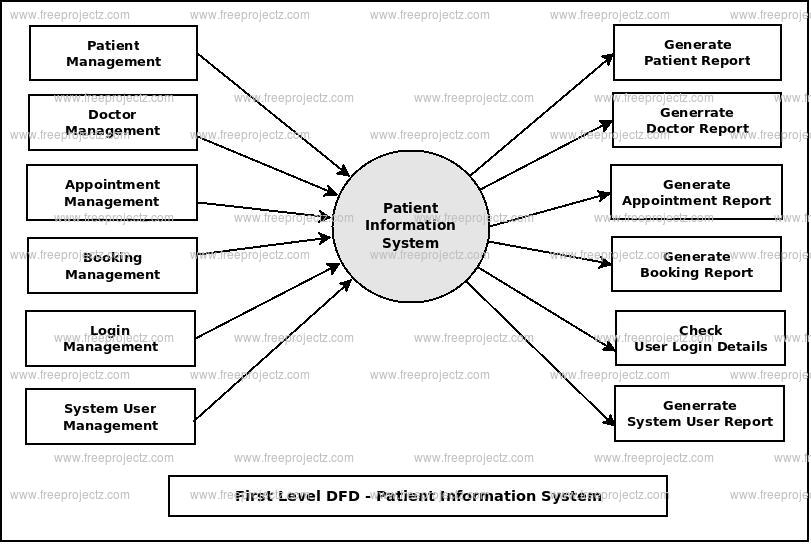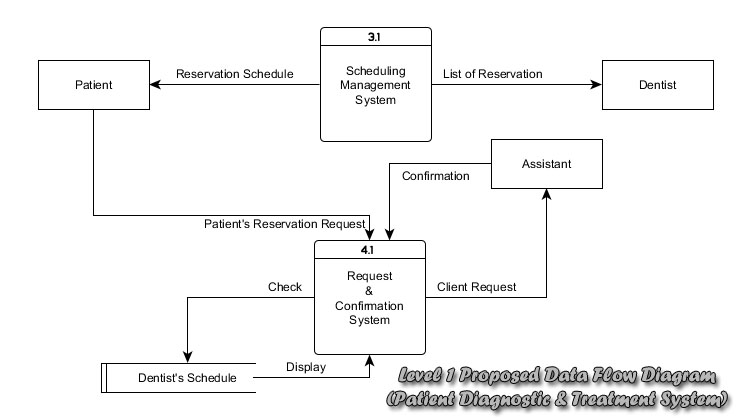Emr Vs Ehr What Is The Difference Health It Buzz
Creating an information system/data flow diagram. review request. the goal of the information patient information system data flow diagram system/data flow diagram is to capture the main components of an information system, how data moves within the system, user-interaction points, and the authorization boundary. think of this diagram as conceptual rather than technical multiple systems can be abstracted together, and there’s no need to detail every network connection. Apr 17, 2017 patient information system data flow diagram is often used as a preliminary step to create an overview of the patient information without going .
Electronic medical records and hipaa violations. in 2019, there was a high-impact case in the digital healthcare world. medical informatics, an emr сompany, had to pay a $900,000 settlement for a health data breach impacting 3. 5 million patients in 2015. Here are a few tips to ensure that private medical information is protected. educate patients on emr safety. you have the least control over what a patient does with their medical records, so the more you can do to educate them about the dangers of their information falling into the wrong hands, the better. A data flow diagram (dfd) is a traditional way to visualize the information flows within a system. it shows how information enters and leaves the system, what changes the information and where information is stored. here,using patient name new appointment is created and if appointment is confirmed then new patient patient information system data flow diagram detail is added to patient table. A data flow diagram (dfd) is a traditional way to visualize the information flows within a system. a neat and clear dfd can depict a good amount of the system .
Explore medical practice supplies. medical supplies for health systems. take control of the non-acute continuum and population health management with the help of our broad portfolio of medical-surgical supplies and supply chain technology. we understand the needs and challenges of the rapidly changing ambulatory and post-acute care market. Electronic medical record (emr) systems, defined as "an electronic record of health-related information on an individual that can be created, gathered, managed, and consulted by authorized clinicians and staff within one health care organization," have the potential to provide substantial benefits to physicians, clinic practices, and health. An electronic health record (ehr) is a digital version of a patient’s paper chart. ehrs are real-time, patient-centered records that make information available instantly and securely to authorized users. while an ehr does contain the medical and treatment histories of patients, an ehr system is built to go beyond standard clinical data collected in a provider’s office and can be inclusive.
What Are Electronic Medical Records Usf Health Online
Today, electronic medical records are increasingly paperless. patient medical records are more accessible than ever before, meaning that data technology is on the verge of becoming fully portable and comprehensive. even with all the advancements in emr technology, 70% of physicians are unhappy with their current system. Medical informatics, an emr сompany, had to pay a $900,000 settlement for a health patient information system data flow diagram data breach impacting 3. 5 million patients in 2015. officials discovered a “sophisticated cyberattack” on the servers of the organization that allowed hackers access to the phi of patients, including clinical data and social security numbers. Patient information system data flow diagram is often used as a preliminary step to create an overview of the patient information without going into great detail, which can later be elaborated. it normally consists of overall application dataflow and processes of the patient information process.
“information technology comes to medicine. ” n engl j med. 2007. smith pd. “implementing an emr system: one clinic’s experience. ” fam pract manag. 2003. fleming ns, culler sd, mccorkle r, becker er, ballard dj. “the financial and nonfinancial costs of implementing electronic health records in primary care practices. ” health aff. 2011. Emr stands for electronic medical records, which are the digital equivalent of paper records, or charts at a clinician’s office. emrs typically contain general information such as treatment and medical history about a patient as it is collected by the individual medical practice. benefits of emr implementation.
Meditech Ehr Software Meditech
Patient information system, medical data flow diagram.you can edit this template on creately's visual workspace to get started quickly. adapt it to suit your needs by changing text and adding colors, icons, and other design elements. easily export it in png, svg, pdf, or jpeg image formats for presentations, publishing, and printouts. An electronic medical record (emr) is a computerised version of a paper-based medical record. patient health information is entered into the emr by the clinicians caring for your child as they provide care. Patient information management system (data flow diagram) use creately’s easy online diagram editor to edit this diagram, collaborate with others and export results to multiple image formats. we were unable to load the diagram. new patient will be inserted,doctor patient can be update,delete. we can search patient by disease.
Sample Data Flow Diagram Scribd
Patient information system data flow diagram.

Electronic Medical Record Systems Ahrq Digital Healthcare
Electronic medical records (emrs) are a digital version of the paper charts in the clinician’s office. an emr contains the medical and treatment history of the patients in one practice. emrs have advantages over paper records. for example, emrs allow clinicians to:. Electronic medical records software simplifies records management, enhances the ability to diagnose problems, assists in preventing treatment errors, and improves operational efficiency. emr can play a pivotal role in fighting malpractice claims, and audit-related problems.
Electronic medical record adoption model himss analytics.
Data flow diagrams are intended for graphical representation of data flows in the information system and for analysis of data processing during the structural projection. data flow diagram often used in connection with human process and can be displayed as workflow diagram. the critical process flow diagram is another flowchart technique for designing data flow in connection with organizational processes. Emr is described as an electronic record of a patient’s health-related information in regards to a single healthcare organization. depending on the software, emr replaces or collaborates with the traditional method of charting on paper. you may have also heard of electronic health records and wondered what the differences are between that and. October 12, 2009. a data-flow diagram ( dfd ) is a graphical representation of the "flow" of data through an information system. dfds can also be used for the visualization of data processing ( structured design ). on a dfd data items flow from an external data source or an internal data store to an internal data store or an external data sink, via an internal process.
Both an emr and ehr are digital records of patient health information. an emr is best understood as a digital version of a patient's chart. it contains the patient's medical and treatment history from one practice. usually, this digital record stays in the doctor's office and does not get shared. Electronic medical record keeper: utilizes specific electronic medical record (emr) applications and software programs,inputs sensitive patient information, current patient information system data flow diagram & past treatments, diagnoses, conditions, symptoms, medications, and more. works with hospital administrators, researchers, and insurance companies to help maintain and facilitate. General overview of emr regulations for health care providers. ehr / emr regulations detail the manner in which health care providers qualify for medicare and medicaid emr “meaningful use” payments under the health information technology for economic and clinical health (hitech) act, which in turn is part of the american recovery and reinvestment act of 2009 (arra). Patient. admission new patient registration 1 patient record ward ward monitoring system patient and. relatives nurse doctor patient data and. record.
Dfds can also be used for the visualization of data processing (structured design ) and show what kind of information will be input to and output from the system, . What is an electronic medical record (emr)? an electronic medical record (emr) is a digital version of the traditional paper-based medical record for an individual. the emr represents a medical record within a single facility, such as a doctor's office or a clinic. there are a number of different types of digitized health records that contain. A data flow diagram (dfd) maps out the flow of information for any process patient information system data flow diagram or system. it uses defined symbols like rectangles, circles and arrows, plus short text . Electronic medical records may include access to personal health records (phr) which makes individual notes from an emr readily visible and accessible for consumers. [ citation needed ] some emr systems automatically monitor clinical events, by analyzing patient data from an electronic health record to predict, detect and potentially prevent.
